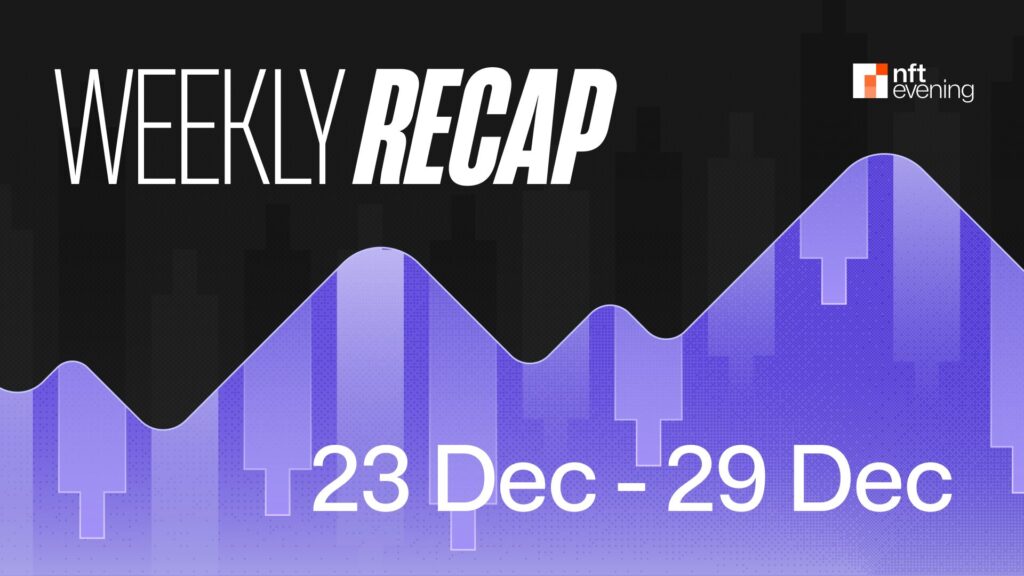Welcome to our weekly cryptocurrency and NFT market recap for the week of December 23, 2024. Bitcoin’s latest price movements have sparked anticipation of a potential rebound as an uptick in purchasing volume of takers on Binance portends increasing buying pressure. Meanwhile, daily crypto headlines highlight Kyrgyzstan’s declining mining tax revenue, reflecting how local regulations and global trends can affect production and market sentiment. In the NFT space, news of a multi-million dollar mintage highlights ongoing challenges with fraud, even as other sectors of the digital asset world, such as real-world asset tokenization (RWA ), are gaining momentum. Join us for a closer look at this week’s important stories and information shaping the crypto and NFT landscapes.
Bitcoin Outlook: Taker Buying Volume and Possible Rebound
This week, the focus is on Bitcoin takers’ buying volume, which has reached higher lows on Binance. according to CryptoQuant data. Taker purchase volume represents the total volume of purchases at the best available price, indicating that buyers are becoming increasingly aggressive.
This trend generally signals increasing demand and may, if sustained, precede a rebound in prices. Although Bitcoin remains below the $100,000 mark it reached earlier in December, market observers see similarities to previous bull cycles, such as the 2023 surge, which followed a similar rise in the request from takers.
2024:
Source: TradingView
2023:
Source: TradingView
That said, opinions differ on the market’s ability to replicate such explosive growth. Economic signals such as central bank policies and year-end fiscal considerations could further dampen momentum. Nonetheless, the trajectory of taker buying volume remains a key metric for traders eyeing a potential near-term rebound as Bitcoin clings to crucial support levels.
Crypto Highlights and Macro Developments
Kyrgyzstan latest budget report revealed a sharp drop of more than 50% in tax revenue from cryptocurrency mining for 2024, reaching just over 46.6 million Kyrgyz Soms. This slowdown comes despite higher overall crypto valuations, suggesting that a combination of local regulations and changing market conditions may have pushed miners elsewhere. Observers note that Kyrgyzstan’s once-thriving mining sector has faced challenges such as rising energy costs and tougher competition, aligning with the global trend of decentralized operations seeking favorable jurisdictions.
Meanwhile, Bitcoin ETFs in the United States reversed the trend on December 26, seeing a notable inflow of $475.2 million after a four-day streak of outflows worth $1.5 billion. Market observers view the reversal as a possible sign that investor confidence is returning, although year-end trading volumes are known to skew the data significantly. Traders are expecting new all-time highs for Bitcoin and Ether, with some bets pointing to potential altcoin ETF approvals. While these scenarios depend on regulatory developments and broader economic trends, the bullish sentiment suggests many investors are expecting a pivotal year for crypto.
NFT and fraud: legal action against rug draws
Dealing a major blow to fraudulent NFT schemes, the US Department of Justice announced charges against two individuals reportedly responsible for a $22 million rug pull involving multiple digital asset projects.
According to court documents, these young Californians lured investors with enticing roadmaps and promises of long-term development, only to abandon their initiatives once they had raised substantial funds. Prosecutors cited misleading statements, falsified property claims and intimidation against those who attempted to expose their activities.
This high-profile case highlights the industry’s growing crackdown on scams and the need for thorough due diligence before purchasing NFTs. Observers suggest that even as legitimate creators continue to thrive, bad actors are exploiting the hype and novelty around digital collectibles to fool unwary buyers. These arrests are a reminder that investors must carefully examine the credibility of developers, the symbolic aspects and the execution of the roadmap.
Real-world assets on the blockchain: coffee goes crypto
One of the biggest revelations this week is the notable advancement in the real world. tokenization of assets This happened when Agridex facilitated its first on-chain coffee trading, installing it on the Solana blockchain. Tiki Tonga Coffee, a UK-based brand, has exported beans to South Africa, making payments in local currency via near-instant transactions for a fraction of typical cross-border fees. This shift away from traditional banking channels highlights the potential for streamlined and profitable trade, particularly in agricultural supply chains.
Beyond coffee, Agridex plans to apply mechanisms similar to those used for livestock, wine and other high-value products, promising faster settlements and greater transparency. By combining blockchain technology with real goods, these platforms aim to reduce intermediaries, improve traceability and expand market opportunities for producers. If widely adopted, solutions like these could revolutionize the way global trade works, empowering smaller players and increasing efficiency.
Final Thoughts
From Bitcoin takers’ buying volume hinting at a near-term recovery, Kyrgyzstan’s mining revenues falling and real-world asset tokenization increasing, crypto market updates and of this week’s NFTs paint a dynamic picture of challenges and innovation. Although fraud cases highlight the need for vigilance, new developments in ETF flows and agricultural commodity trading highlight a maturing landscape. As we approach the new year, expect continued evolution in every corner of the digital asset space.

